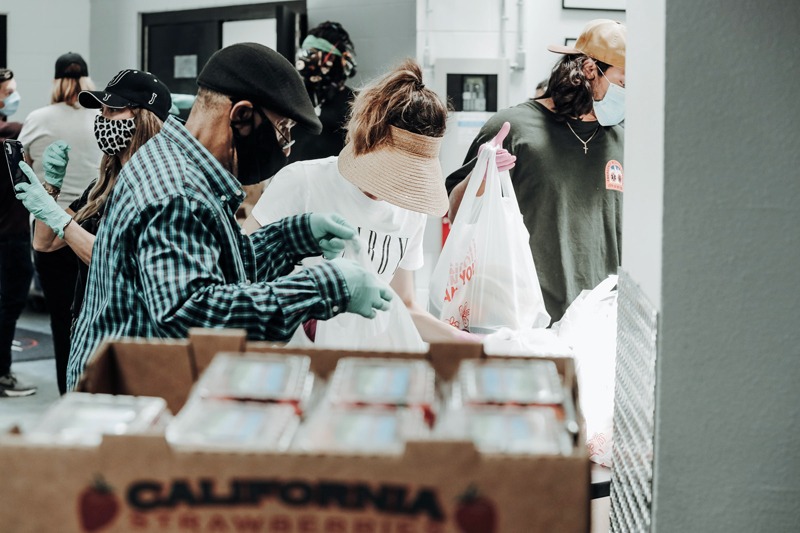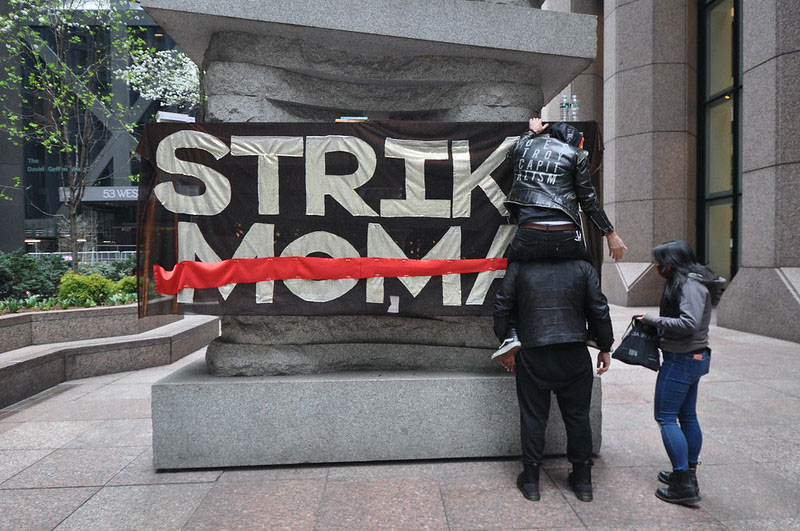
July 10, 2017; Philadelphia Citizen
According to Local Harvest, community-supported agriculture (CSA) has been around for about 25 years. It offers benefits to farmers and to consumers, and is based on a model of shared risk that helps to keep local farming alive, while offering shareholders a steady—though not always predictable—stream of fresh produce for a modest annual investment. Swap out the word “agriculture” for “art,” and say hello to a borrowed model that is gaining in popularity with arts groups and collectors across the country. Community-supported art programs are cropping up everywhere.
As described in the Philadelphia Citizen, the artist collective Grizzly Grizzly is now in the midst of its second CSA offering. The first was in 2012, and that same year the Philadelphia Folklore Project also ran a CSA project.
Two Minnesota organizations—Springboard for the Arts and Mn Artists—are credited with planting the seeds of this new CSA model in 2010.
In Philadelphia, Lance and Melissa Rothstein, already fans of the city’s local arts scene, happily enrolled in the 2012 CSA, paying $475 for the promise of ten original pieces of art to be created by ten local artists working in different media; also included with their share price was the opportunity to meet each of the artists whose work would be added to their personal collection. For the current CSA, the share price is the same, but only six artists are in the mix. The Rothsteins know they are still getting a bargain, even as they are buying those artists the freedom to realize their visions, without worrying about whether someone will buy their work—because it’s already been sold. About half of the 25 available 2017 CSA Art Philadelphia shares have been purchased to date.
Sign up for our free newsletters
Subscribe to NPQ's newsletters to have our top stories delivered directly to your inbox.
By signing up, you agree to our privacy policy and terms of use, and to receive messages from NPQ and our partners.
A recent NPQ article highlighted the current business model challenges of operating art galleries, noting that “the growing gap between ultra-rich art dealers and small galleries who can afford to take risks will leave many unrepresented artists out of the loop, and many communities without a viable channel to the art world.” Applying the CSA model to art may be one way to close that gap, as the Philadelphia Citizen article explains:
For the artists, the model offers clear financial and creative advantages over selling through a traditional gallery. Typically, artists seek out galleries, but in Philadelphia, where there are many art schools and not enough galleries, competition is steep. Even when an artist’s work is accepted and shown by a gallery, he or she is then banking on the right person walking through the door and falling in love with the work—at which point the artist receives half of the proceeds. And in order to appeal to those gallery visitors, artists may alter their original vision to make it more commercially viable.
Philly is one of several markets where the CSA model seems to be catching on. A quick online survey turned up several others. Typically, the investment is about $500, with each shareholder receiving 6 to 10 works of art. Often there is a jury process to select the artists, and almost always there are “pick-up events” where those who have invested in the work get to meet the artists—sometimes at a local farmers’ market, just to reinforce where the concept came from.
Here is a basketful of CSA projects to sample—some of which are still fresh, while others seem to have been one-time offerings:
- Cambridge, Massachusetts: Launched in 2016, and offers small, medium and large shares.
- St. Louis: Active in 2014-15 but currently on hiatus, this program’s website says, “Who art the artists? Your neighbors.”
- Charlotte, North Carolina: This program has been active since 2013, and its website does a great job of explaining how the model works.
- Maine: Because it covers the entire state, this CSA is a mail-order operation.
- Houston: In 2015, this CSA promised “6 original works of art and 2 parties for $350.”
- Western New York: This program’s tagline is “Investing in Western New York’s Local Art Ecology.”
- Trenton: Another good tagline, especially in the Garden State—“Growing art instead of vegetables.”
With community-supported agriculture, occasionally you get a couple of rutabagas or a few habanero chili peppers that are not to your liking. That’s the nature of the model—you get what the farmers grow. The same may happen with community-supported art, and as Lance Rothstein admits, while he and his wife kept all ten of the pieces they acquired in 2012, some have not yet made it into the rotating collection on their walls, or have not even been framed—a process that would require a larger investment than the art itself. But he has no complaints, and explained why he didn’t hesitate to sign up again: “It’s about supporting local artists and encouraging an upstart to grow. And if I can support that, and support not only that person, that gallery, but my city—that’s something that I really enjoy.”—Eileen Cunniffe












